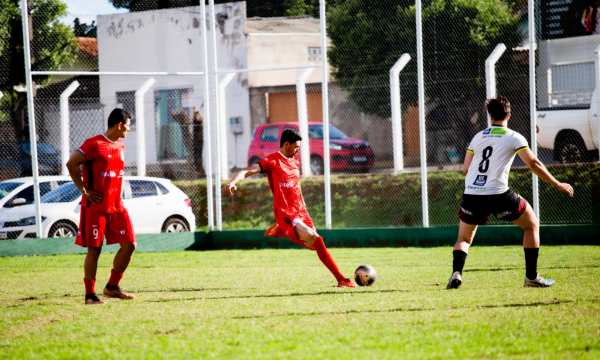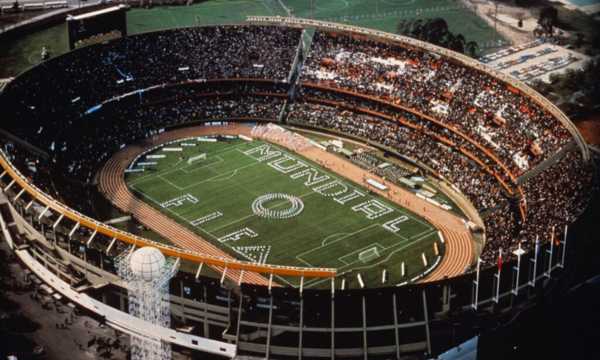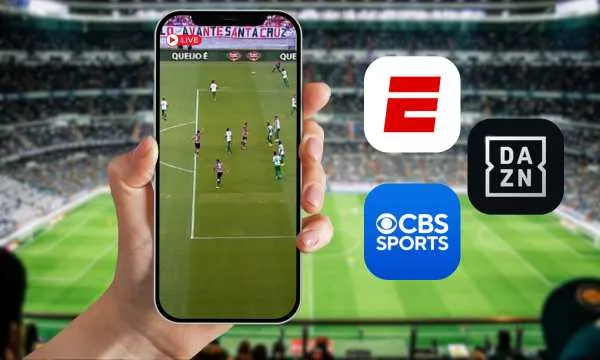Discover All Football Modalities and Their Rules
Football goes far beyond what you see on TV on Sundays – there are various versions of this sport loved by millions around the world!
Ad
Each version of the sport has its own set of rules and peculiarities that completely transform the dynamics of the game.
From the perfectly mowed grass of stadiums to the scorching sand of beaches, football constantly reinvents itself.
In this comprehensive article, we will unravel all these variations and their specific rules, so you can appreciate this passionate sport even more in its different forms.
Essential Rules of Field Football
Field football is played by two teams with 11 players each: one goalkeeper and ten outfield players.
The traditional positions include defenders, full-backs, midfielders, and forwards, with tactical variations such as 4-4-2, 4-3-3, or 3-5-2.
Professionally, each position has specific roles within the tactical system chosen by the coach. Fouls include pushing, tripping, kicking, unfair charges, and intentional handballs.
Fouls inside the penalty area result in a penalty kick, taken from the 11-meter mark.
Offside occurs when an attacker is ahead of the second-to-last defender at the moment of the pass, being one of the most complex rules in football.
Teams can make five substitutions in three distinct moments of the game, plus halftime. The goalkeeper uses specific gloves, and players wear cleats suitable for natural grass.
Players must wear shin guards for protection. The game is divided into two 45-minute halves, with stoppage time added by the referee to compensate for ball stoppages.
Yellow cards serve as warnings, and two result in expulsion, as does a direct red card for serious infractions.
Learn the Distinct Rules of Futsal
In futsal, each team has 5 players: one goalkeeper and four outfield players. The traditional positions are: goalkeeper, fixed (defender), wings (right and left), and pivot (forward).
Fouls in futsal are similar to field football but cumulative – after the fifth team foul per period, all result in a direct free kick without a wall.
There is no offside rule, allowing more offensive positioning by players. Substitutions are unlimited and rolling (with the game in progress), allowing constant tactical rotations and high physical intensity.
An important distinction in futsal is the five-second rule for ball restarts.
The goalkeeper in futsal can only touch the ball for four seconds and cannot receive a pass from a teammate twice consecutively.
Additionally, he can be substituted by a “flying goalkeeper” who acts as an extra outfield player in attack. The footwear used is specific indoor shoes (without cleats), providing appropriate grip and safety.
The game time is two 20-minute halves, with the clock stopping whenever the game is interrupted.
Futsal requires refined technique, quick passes, and tight marking, being considered by many as the perfect “school” for developing young athletes’ technical skills.

Futsal-macth-(Source-Google)
Understand the Unique Rules of Beach Soccer
Beach soccer, also known as sand football, has five players per team: one goalkeeper and four outfield players.
Unlike other modalities, there are no fixed positions – players constantly alternate between defense and attack. The nature of the terrain requires frequent rotation of athletes due to high physical wear.
In beach soccer, all fouls result in direct free kicks, with no wall formation. The player who suffered the foul must be the one to take the free kick, except in case of injury.
Throw-ins can be taken with feet or hands, at the player’s discretion. Substitutions are unlimited, made through the exchange zone without needing the referee’s authorization.
The game is divided into three 12-minute periods, with brief intervals between them for rest and hydration.
The goalkeeper can use his hands in his area and has only four seconds to put the ball back into play.
A unique aspect is that ties are not allowed – in case of a draw, there is an overtime period followed by a penalty shootout.
Players play barefoot, with any type of footwear or foot protection prohibited, except for medical bandages. Beach soccer values aerial and acrobatic plays, with bicycle kicks being quite common.
Discover Specific Rules of Society Football
In society, each team plays with 7 players (varying to 5 or 8 depending on the format): one goalkeeper and the rest distributed in positions such as full-backs, defender, midfielders, and forwards.
Fouls include pushing, holding, tackling from behind, and rough play.
A crucial difference is the absence of the offside rule in most tournaments, providing more freedom to attackers and more goals per match.
Substitutions are unlimited and can occur at any time with the referee’s authorization.
Cleats with metal or high studs are prohibited, with specific footwear for synthetic grass (society) recommended to avoid injuries.
The back-pass rule follows field football – the goalkeeper cannot pick up the ball with his hands after an intentional pass from a teammate.
In society, there is usually a circular or rectangular area that limits where the goalkeeper can use his hands. The distance for free kicks and the size of the wall are smaller compared to traditional football.

Society-football-macth-(Source-Google.)
Differences in Ball, Field, Game Time, and Substitutions
The balls used in different modalities vary significantly in size and weight.
In field football and society, a size 5 ball is used, in futsal, the ball is smaller and heavier to reduce bounce, while in beach soccer, it is lighter and softer to avoid hurting bare feet.
The traditional field measures approximately 105×68 meters, while futsal courts are 40×20 meters. Beach soccer takes place in a space of 35-37×26-28 meters, and society varies between 40-50×25-35 meters.
These differences fundamentally alter the dynamics of the game. Game times also differ greatly between modalities:
- Field football: 2 halves of 45 minutes running time;
- Futsal: 2 halves of 20 minutes with a stopped clock;
- Beach Soccer: 3 periods of 12 minutes;
- Society: Generally 2 halves of 25 minutes;
Substitutions range from restricted in field football (5 per team) to unlimited in futsal, beach soccer, and society.
These differences directly affect the game’s pace and the strategies adopted by coaches in each modality.
How These Rules Influence Football Tactics
The rules of each modality directly shape the tactics employed by coaches and players. In field football, the offside rule forces higher defensive lines and synchronized movements of attackers.
This creates a more strategic game with greater midfield appreciation. In futsal, the absence of offside and unlimited substitutions result in a high-intensity game with constant pressing.
This indoor modality requires frequent tactical rotations and versatile players who can both attack and defend efficiently.
Beach soccer, with its small and uneven field, favors players with great technical skill and mid-range shooting ability.
In this modality, a good throw-in can be as dangerous as a corner kick in traditional football.
Society allows more offensive formations due to the absence of offside, but requires greater physical conditioning from players.
Tactics in all these modalities must adapt to field dimensions, game time, and specific rules to maximize the chances of victory.
The Most Controversial Rules Easily Explained
The offside rule in field football generates constant debates, even with the help of VAR.
Essentially, a player is offside if they are closer to the opponent’s goal than the second-to-last defender when the ball is passed.
This rule exists to prevent attackers from “camping” near the goal. The hand/arm rule has changed significantly in recent years.
Currently, any handball that abnormally enlarges the body space is considered an infraction, regardless of the player’s intention. This still causes much controversy among fans and analysts.
The criteria for yellow and red cards vary between referees and competitions, causing intense debates. Tackles from behind, two-footed challenges, and aerial duels are often interpreted differently.
Modern football implemented VAR to resolve disputes, but it created new controversies:
- Millimetric offside lines
- Subjective interpretation of “clear and obvious error”
- Delay in play analysis
- Interference with the natural flow of games
Discover Other Football Modalities
The sport has an adapted version for visually impaired athletes, known as football 5-a-side, played with bells inside the ball and side barriers.
Only the goalkeeper, who has normal vision, can guide players with verbal commands. This Paralympic modality demonstrates that the sport transcends physical limitations.
Showbol (or indoor soccer) is popular in North America and played on courts surrounded by boards, allowing the ball to stay in play after bouncing off the sides.
This version maintains a fast pace and increases the number of goal attempts per match.
Footvolley combines elements of football with beach volleyball, using the head, chest, thighs, and feet to pass the ball over the net.
Born on the beaches of Rio de Janeiro, this sport requires extreme technique and coordination from players.
Final Considerations
Football, in its multiple modalities, demonstrates an incredible ability to adapt to different contexts and needs.
From field football to more innovative versions, each modality has specific rules that completely transform the game experience.
The rules are not just norms to be followed, but fundamental elements that shape tactics, develop specific skills, and create unique spectacles.
How about trying to play or watch a version you didn’t know before? The world of football is vast, and there is always something new to discover and appreciate in this sport that is much more than just a game – it is a global passion.
FAQ
Is beach soccer officially recognized by FIFA?
Is VAR used in all football modalities?
Which football modality is the most popular worldwide after field football?
Which football modality is considered the most physically demanding?
How is stoppage time calculated in field football?
 Best Apps and Platforms to Watch AFCON 2025 Live
Best Apps and Platforms to Watch AFCON 2025 Live
AFCON 2025 excitement is here! With the right apps and platforms, you can watch every game live without missing a moment. Ad AFCON is about to […]
Keep reading Global Giants: Fascinating Facts About Biggest Football Stadiums
Global Giants: Fascinating Facts About Biggest Football Stadiums
Do you know the secrets behind the largest football stadiums? Keep reading for details! Ad Curious to find out what makes biggest football stadiums so unique? […]
Keep reading Best Apps with Live Football to Watch Anywhere
Best Apps with Live Football to Watch Anywhere
Discover the following apps to watch live football on your cell phone, whether Android or iOS. Ad With modern apps, you can follow your club, league, […]
Keep reading